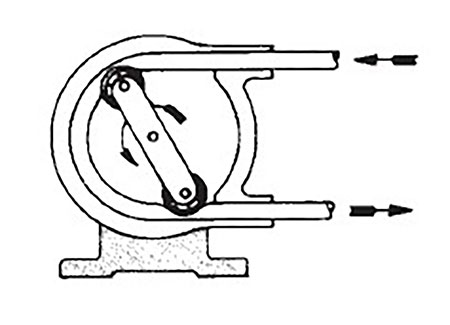
Peristaltic pumps are the most common type of flexible member positive displacement pump. Flexible member pumps have a flexible element that is used in the pumping, and in the case of peristaltic pumps, the flexible element is a tube or hose. The tube is the only part of the pump that touches the pumped fluid, and the pumping is achieved through the flexible tube running along a track wherein rollers rotate and squeeze the tube, sealing off a constant volume section and moving it from inlet to outlet.
A key application consideration for this pump type is they do not require a dynamic shaft seal since the fluid is completely contained in the tube, making them a sealless design. This is extremely valuable for chemical, medical and wastewater situations, as it can prevent contamination and corrosion between the fluid and the pump innards.

Since the tube is contacting the fluid, it must be chemically compatible with the fluid, and erosive wear capability should be considered. The life of the tube depends directly on its chemical compatibility and resistance to wear. Regular service and inspections of the tube should be conducted. Some further advantages of the peristaltic pump are that it is self-priming and fully reversible (depending on the system).
For more information on peristaltic pumps, refer to HI standard, Rotary Pumps for Nomenclature, Definitions, Application and Operation (ANSI/HI 3.1-3.5) at pumps.org.


